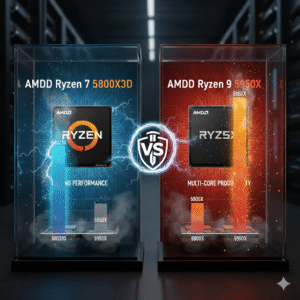It’s 2025, and the world is racing toward an electric future. EVs are everywhere—praised as clean, green, and the In a world increasingly captivated by electric vehicles (EVs), it’s easy to assume that petrol cars are on their way out. However, as we step into the future of 2025, a closer look reveals that petrol cars may not only survive the EV wave but could potentially thrive, thanks to the nuanced reality of emissions and sustainability. This article will explore the hidden emissions associated with electric vehicles, the lifecycle of petrol cars, and the evolving role of both types of vehicles in our transportation landscape.
Understanding Hidden Emissions: The Unseen Cost of EVs
Manufacturing Impact
While electric vehicles are touted as environmentally friendly, their production carries a significant carbon footprint. The extraction and processing of materials for EV batteries—primarily lithium, cobalt, and nickel—are energy-intensive processes that often rely on fossil fuels.
- Battery Production: The production of a lithium-ion battery can emit around 150-200 kg CO2 per kWh of capacity. For example, a typical EV with a 60 kWh battery may result in 9,000 kg CO2 or more just from manufacturing.
- Resource Mining: Mining activities, especially in countries with lax environmental regulations, can lead to severe ecological damage, which further complicates the carbon savings associated with electric vehicles.
Energy Sources
While EVs produce zero emissions at the tailpipe, the electricity that powers them significantly influences their overall carbon footprint:
- Coal vs. Renewable Energy: If the electricity is generated from coal, an EV could emit more lifecycle CO2 than a petrol car.
- Grid Reliability: In regions where the grid heavily relies on fossil fuels, the environmental benefits of owning an EV diminish, raising questions about their global applicability.
Key Insight: “An EV is only as clean as the electricity that charges it.”
The Lifecycle of Petrol Cars
Legacy Efficiency
Petrol cars have undergone significant advancements over the last few decades, improving their fuel efficiency and reducing harmful emissions dramatically.
- Fuel Economy Improvements: Modern petrol cars can achieve 40-50 miles per gallon. This efficiency translates to fewer emissions over their lifetimes, especially when compared to older models.
- Emissions Reduction Technology: Technologies like catalytic converters and particulate filters have markedly reduced the harmful output of petrol engines.
Longer Lifespan
Petrol cars typically have a longer lifespan than EVs. With proper maintenance, a petrol vehicle can last 15 years or more, which means it can serve its purpose effectively without the need for replacement.
Affordability and Accessibility
For many consumers, petrol cars remain more accessible due to their lower upfront costs compared to EVs:
- Purchasing Price: While EV prices have been gradually dropping, the average cost of an EV still hovers around $55,000, compared to around $30,000 for a petrol vehicle.
- Infrastructure: The existing network for petrol refueling is vast and well-established, making it convenient for drivers who may not have access to EV charging stations.
Environmental Policies and Consumer Preferences
Regulatory Climate
Policies governing automobile emissions are changing, but the timeline for EV adoption varies significantly across regions. Some countries push for a fast transition to EVs, while others, particularly developing nations, continue to rely heavily on petrol vehicles for economic reasons.
Cautionary Message: “Rushing to eliminate petrol cars without considering socio-economic impacts could lead to backlash against policies seen as impractical by the average consumer.”
Consumer Sentiments
The transition to electric vehicles is not purely driven by environmental factors. Many consumers still exhibit a preference for petrol cars due to:
- Familiarity: Drivers are accustomed to petrol engine dynamics and often prefer the driving experience they offer.
- Less Range Anxiety: Lack of adequate charging infrastructure and concerns over battery lifespan can deter consumers from switching to EVs.
Conclusion: A Balanced Approach to the Future
As we look toward 2025 and beyond, it’s clear that both petrol cars and electric vehicles have roles to play in our transportation future. While the hype surrounding EVs is palpable, the hidden emissions associated with their lifecycle and the evolving capabilities of petrol vehicles suggest that we should not count the latter out just yet.
Ultimately, a balanced approach that emphasizes improved fuel efficiency, cleaner production methods, and renewable energy sources for EVs can pave the way for a more sustainable transport system.
So, whether you align with team petrol or team electric, the most important takeaway is to stay informed and engaged in the conversation on what represents true sustainability in our evolving automotive landscape.
Feel free to explore more about this topic through resources like The Environmental Protection Agency (EPA) or International Energy Agency (IEA). For personal stories and more insights, consider sharing your experiences in the comments!




